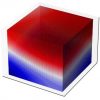The objectives of the course are:
- The understanding of the working principles of Geographical Information Systems (GIS).
- The development of their application capacity in a wide range of environmental applications.
- The development of the ability to solve complex spatial problems.
- Familiarity with combining and using data from various sources (field measurements, remote sensing data, open databases, etc.).
- The acquisition of skills related to the use of open GIS software.
Contour:
Course 1 – Introductory course: Basic concepts of GIS, design of Geospatial Databases.
Lesson 2: Interoperability between programs, open data sources, Google Earth Engine, Open Street Map, Inspire geoportal.
Lesson 3: Spatial interpolation – geostatistical analysis
Lesson 4: Analyzes based on the Digital Relief Model (DEM), slope and relief orientation, line of sight.
Lesson 5: Zoning, wind park zoning, landfill site zoning.
Lesson 6: Assessing risk and vulnerability, delineating protection zones.
Lesson 7: GIS and remote sensing, open satellite data sources, data from Aqua and Terra satellites.
Lesson 8: Spatial and temporal analysis of plant cover indicators.
Lesson 9: Spatial and temporal analysis of soil temperatures and potential and actual evapotranspiration.
Lesson 10: The GRACE mission and the Earth’s gravitational field variation data.
Lesson 11: Using GRACE data to record changes in polar ice cover.
Lesson 12: Combining Mathematical Modeling and Remote Sensing Data.
Lesson 13: Presentations of case studies.
